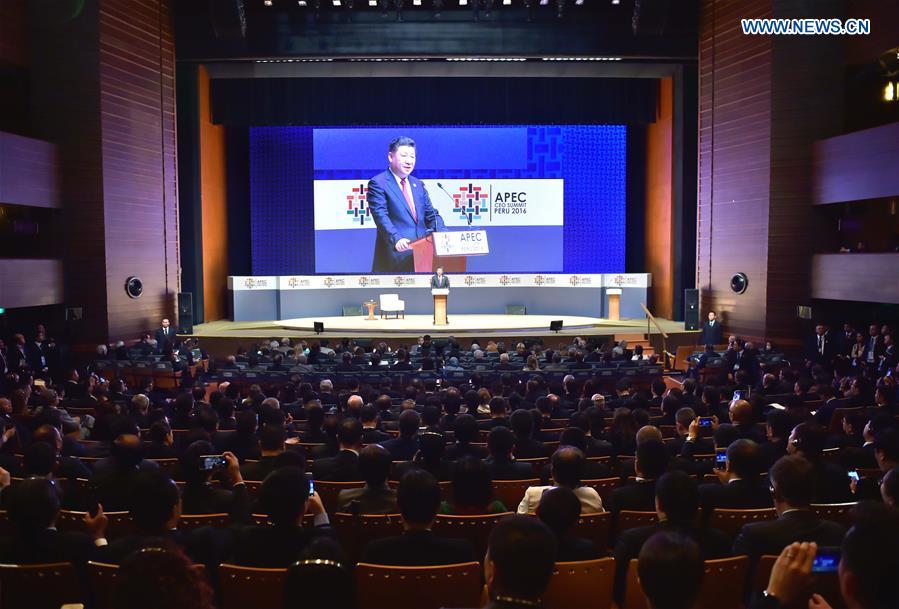President Xi Jinping in Latin America
- By Kerry Brown
 0 Comment(s)
0 Comment(s) Print
Print E-mail China.org.cn, November 21, 2016
E-mail China.org.cn, November 21, 2016
|
|
| Chinese President Xi Jinping delivers a keynote speech at the Asia-Pacific Economic Cooperation (APEC) CEO Summit in Lima, Peru, Nov. 19, 2016. (Xinhua/Li Tao) |
Latin America has figured in Chinese foreign policy historically as a peripheral and sometimes difficult place. There were links in the period of Mao, with Communist movements in Argentina and other countries being met at a high level in Beijing. But in terms of tangible links, they were few and far between.
The BRICS rubric and the idea of south-south co-operation in the last decade have at least provided a more meaningful framework within which China can operate regionally. It sees Latin American countries as high growth, developing economies where it can share ideas about the building of infrastructure and the creation of a wealthier middle class. Even so, the main issue with the continent is that it is regarded as being in the strategic area of the United States, and therefore a place where every move that China takes needs to be carefully considered.
For China, this era is one of huge risk and opportunity. At the Asia Pacific Economic Cooperation (APEC) summit, in Peru, the main issues will be how to pursue common agendas on security, trade and sustainability. On all of these, Trump stands diametrically opposed to the current Obama administration. For China the issue is now one of positioning. With the U.S.-led Trans-Pacific Partnership free trade deal now effectively dead, China can consider something to take its place. More space has opened up. For climate change, Trump has expressed scepticism. Once more, China is now in a leading position, urging the incoming American president to not walk away from the crucially important deals that were signed in Paris late last year.
China's opportunity to play a global role has never been greater. The fact that across the three countries that President Xi Jinping has been to this time in Latin America there has been an upgrading of the relationship in one of them (Ecuador) to comprehensive strategic partnership, and that China figures now as Chile's third largest trade partner is remarkable. In the past ten years, it has been a major user of imported commodities like iron ore from Brazil. But now it is seeking a more balanced, multifaceted relationship. In this area, a U.S. that threatens to be more inward looking, protectionist and isolationist means that China is suddenly a major international force for security, economic growth and sustainability in ways which have never been imagined.
This sort of exposure is not something that Chinese leaders will feel very comfortable with. In a region like Latin America, the last thing they want is to be drawn into some strategic play where they are used against the U.S. by third parties. Latin American politics are complex. There are still a large number of countries that do not diplomatically recognize Beijing. Working across this complex, uneven region, especially in view of the very volatile domestic politics in some of the countries, will be challenging.
It is clear that China feels it has a story to tell about itself in Latin America. But unlike in other places, this story is still at the beginning, rather than one that is already half told. This is an area where China could have a big impact with the right strategy – but also one where it could find itself exposed.
The author is an op-ed contributor to Beijing Review and director of the Lau China Institute at King's College, London.







Go to Forum >>0 Comment(s)